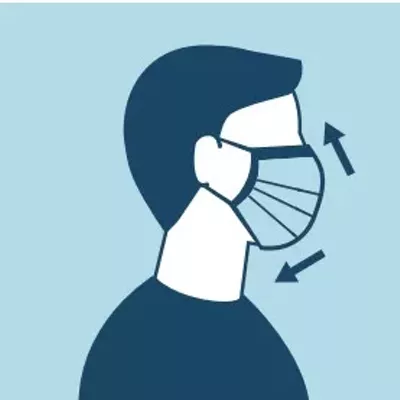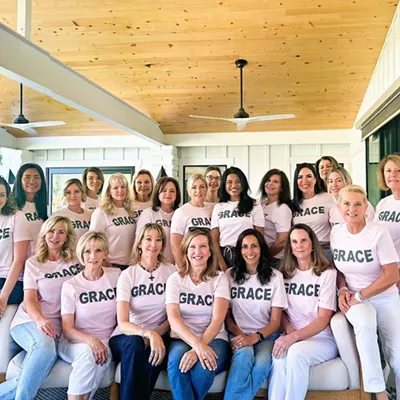But an equal challenge is the chronic shortages of doctors, nurses and other medical workers to treat them.
"Right now, we're short four physicians," says Mariposa CEO Jim Weldon. "So we're in recruiting mode all the time."
To meet its staffing needs, however, the clinic must overcome an array of hurdles, from trying to match big-city salaries to convincing doctors that small towns boast their own charms. "There are a number of professional and family considerations," says Weldon. "Even those health care providers who prefer small communities might have a spouse who's also a professional. So there may be problems finding them appropriate employment. Or if they have kids, then there's the perception of the local school system."
Statistics from the National Rural Health Association reveal that Mariposa is hardly alone in this struggle. While a quarter of Americans live in rural areas, those areas are served by only 10 percent of the nation's doctors. For specialized care, the gap is even greater, with only 40.1 specialists per 100,000 residents in rural areas, compared to 134.1 specialists per 100,000 in cities.
At the same time, rural health needs are acute. Although only a third of all auto accidents happen in the country, two-thirds of deaths occur on rural roads. People in rural areas also have lower incomes than city dwellers--about $7,500 less on average--and are much more likely to fall beneath the federal poverty level. Up to 24 percent of children in rural areas live in poverty, and rural residents are more likely to use food stamps than urban dwellers.
Many expect the urban-rural gap to worsen. "Our population is growing, and we have a lot of doctors in Arizona," says Alison Hughes, director of the UA's Rural Hospital Flexibility Program. "But they tend to practice urban. And when they go rural, they don't tend to stay for a long time."
Administered by the Mel and Enid Zuckerman Arizona College of Public Health, the rural hospital program distributes federal funds to clinics throughout the state. It also provides recruitment assistance and has helped 11 rural hospitals gain critical access designation, allowing them to assist Medicare patients.
But rural clinic staffing is hardly a new dilemma, Hughes says. "Billions of dollars have been spent on this over the last 20 years, and we're still facing the same shortage problem."
At the same time, federal funding cuts may make rural recruitment efforts even tougher. Only recently, small clinics dodged a major bullet, says Alan Morgan, head of the Kansas City-based National Rural Health Association. "In the last year, Congress has threatened to eliminate almost all of the rural grant funding. It was critically important for lawmakers from rural areas to come together, and they were able to stop those cuts."
So what can be done to reduce this trend? Experts say that exposing medical students to rural communities--either during their early training years or under residency programs--is key. That's a primary goal of the Rural Health Professions Program, in the UA College of Medicine. Begun in 1997, the program rotates about 65 students into those communities throughout their training. And to date, it has successfully placed eight doctors in full-time rural practices.
Students are handpicked for participation, says Carol Galper, the medical college's assistant dean for curricular affairs. Still, she says rural medicine isn't for everyone. Doctors quickly "become big fish in a small pond. And the whole issue of confidentiality when they run into patients in public places, sit next to them in church or coach their kids' soccer team--there's a blurring of the professional and personal boundaries."
Others rankle at the sheer remoteness of postings such as the Hopi Health Care Center, a pretty little hospital on Northern Arizona's Hopi Reservation. Most of the center's doctors in residency are from out of state, and many arrive under the National Health Service Corps, a federal program that helps pay tuition in exchange for working in under-served areas. But that also means a constant rotation; while Hopi currently has 12 full-time family-practice physicians, "this year, we're expecting to lose a third of our medical staff," says Daryl Melvin, the hospital's CEO.
In part, Melvin blames the UA for failing to install residents on his reservation. "Residency programs are a pipeline to the future," he says. "But one issue we continue to struggle with is making universities, the medical schools, aware of challenges we have in really remote Arizona. We're just not getting the support we'd like."
But according to Carol Galper, there are several reasons that's not happening. "First of all, there are very few rural-focused residency programs in the country," she says. "And it also comes down to a compensation factor--hospitals are paid by Medicare, and that federal money follows the (doctor) resident. So if a resident is going off for several months to some other hospital, that's where's the money going to go."
Meanwhile, even rural communities with doctors in training aren't guaranteed those doctors will stay after their residencies are complete. To circumvent this problem, one Nogales program goes directly to area schools. "You have to catch them young," says Karen Halverson, director of the Southeast Arizona Area Health Education Center. "We start with the kids through high school health-career clubs, to grow our own health care professionals and shape their education more locally."
Kids who grow up in small towns and go on to medical school "are of two minds," she explains. "They either say, 'I can't wait to get out of this one-horse town,' or they say, 'That's where I want to raise my family.' And they're the ones who you can recruit back to their communities."
At the Mariposa Community Health Center, Jim Weldon certainly hopes that's the case. Until then, however, the center must rely on energy-draining recruitment drives, and budget-straining temporary health care providers. "That's a huge financial burden," he says. "But we have a obligation to our community, and we take it very seriously."










